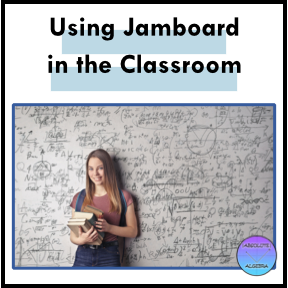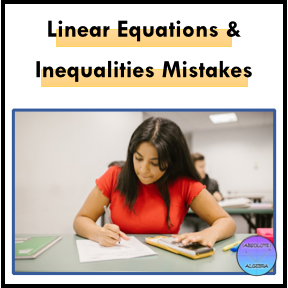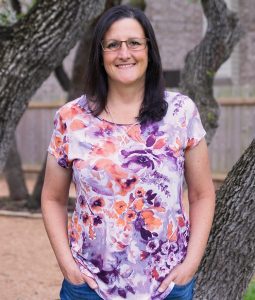Students struggling with using metacognition in the classroom? You are not alone!
I’ve been a math teacher for over 15 years and lately I’ve noticed that students are lacking an intuitive sense when it comes to solving math problems. They do not seem to understand when the answer they have given is unreasonable. This past year was particularly troublesome. There was a piece of the puzzle I was missing in my curriculum. I knew I needed to do something different if I was going to help my students succeed in math.
I didn’t recognize it at the time, but what my students were lacking was metacognition. This is the awareness of their own thought processes. Not having this skill was holding them back.
However, after participating in a virtual conference, I felt like I had finally found the missing piece of the puzzle! I noticed that most of the presenters were intentionally creating time in their math classrooms for students to build their metacognition.
They were teaching students not just how to complete math problems, but how to logically think about math problems. Their focus was on the process versus the content. I couldn’t believe the results they were seeing! So, I started doing research of my own. Along the way, I have found some great resources that help students with using metacognition in the classroom. I want to share them with you to help you get your students off on the right foot this year!

Websites to learn more about using metacognition in the classroom for math instruction:
- Open Middle: This website comes from co-founders Robert Kaplinsky and Nanette Johnson. It highlights what they term as “Open Middle” math problems. These types of problems “require a higher Depth of Knowledge than most problems that assess procedural and conceptual understanding.” The problems will get your students thinking about thinking. It will help them develop the metacognition that is needed to tackle math problems intuitively.
- Building Thinking Classrooms: This website is based on the book Building Thinking Classrooms in Mathematics, Grades K-12: 14 Teaching Practices for Enhancing Learning by Peter Linljedahl. Linljedahl’s approach to using metacognition in the classroom focuses on 14 practices that teachers must implement in order to create a “Thinking Classroom” These include everything from types of group work to how the classroom is arranged to how students take notes. If you find the website helpful, I highly suggest reading the complete book!
Math activities and worksheets that can help build metacognition in the classroom:
- Tangrams: These digital tangrams have students build different objects with specific shapes in order to complete the design.
- KenKen Puzzles: This website explains how to complete a KenKen puzzle. All of the KenKen puzzles are free.
- Diamond Problems: These problems are not only great for teaching thinking skills, but also work great for factoring in Algebra!
- Math Puzzles: A variety of digital math activities to help students build their math thinking skills.
- Mashup Math: Free printable math puzzles to help develop number sense for all grade levels.

Need ready-to-go resources? I’ve got plenty in my TPT store to help you with building these skills!
- Percent Word Problems Fall-Themed Logic Puzzle: These task cards will have students not only solving percent word problems, but using their answers to complete a logic puzzle They make great activities for Thanksgiving time!
- Writing Linear Equations in All Forms Logic Puzzle: This product is much like the one above but focuses on writing linear equations and is winter themed.
- Algebraic Properties Logic Puzzle Activity: This activity will have your students off on a zoo adventure while completing algebraic properties problems in order to complete the logic puzzle.
- Writing One-Step Inequalities Logic Puzzle “What’s in the Fridge”: These task cards will have students solving one-step inequalities in order to figure out who brought which food to the party.
In this coming school year, I challenge you to move away from merely teaching content and focus part of your math instruction on teaching the process of thinking. When using metacognition in the classroom, you will spend less time correcting simple errors. Students will learn to assess their thinking and will realize when an answer does not make sense for the problem.
For ultimate success using metacognition in the classroom, I suggest starting with these strategies and activities right at the beginning of the school year. This will help your students realize the importance of thinking about thinking. It will teach them routines that will help them succeed not only in the math classroom, but also in life!
Are you going to be taking the time to teach metacognition this year? Which of these resources will you try out? Let me know which ones you find the most helpful in the comments!





